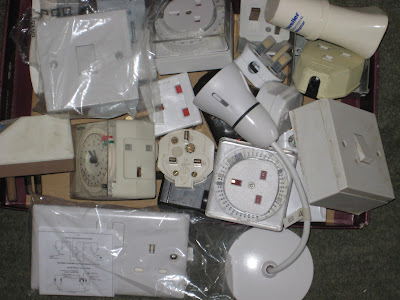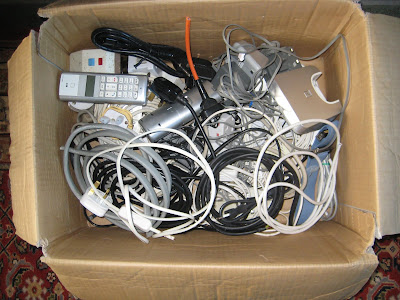I continue blogging and commenting with reduced output.
Thank you, however, for the encouraging comments; they mean a lot. I was pleased many said they enjoyed my last post about the surprisingly evocative objects visible in the background of old photographs.
It is also enormously enriching to read other blogs about lives, locations, concerns, thoughts, opinions, feelings, humour, annoyances and so many other things, of so many others, who I would never meet in real life. We might not always like each other there, but I think for the most part we do on Blogger. We are able and intelligent people trying to make sense of this imperfect world as best we can. Long may it continue. I hope that’s not too pompous.
I am not really a proper blogger, this being mostly a memoir rather than a diary. It is not a “web log”. I started with the notion of accumulating some kind of printed book, probably private rather than published. So, alongside new posts, I will continue to revise and repost earlier, poorly thought-out stuff.
What is memoir? How does it differ from history or autobiography, or even fiction? One could do worse than to read one of my favourite writer’s, Ian Jack’s, article on this. He recalls, as editor of Granta, receiving a piece based on a childhood memory of a Scottish fishing village where two trawlers and their crews were lost in a storm. He asked the writer to make some revisions, and when the piece came back the names of the trawlers had changed. It transpired that the writer had combined two separate events, years apart. “But this is memoir,” was the writer’s defence, “it is not non-fiction.” The writer appeared to be saying: “it makes a better story if it had happened like this” rather than reporting what actually did happen.
Revisionism occurs in factual history too: consider how accounts of British Empire are now being re-interpreted. I also remember being fascinated on reading the revised edition of Michael Holroyd’s brilliant biography of Lytton Strachey, to discover that a friend called Clare Bollard in the earlier editions was actually the vivacious and voluptuous artist Valentine Dobrée, whose open marriage and indiscretions caused much disruption within the Bloomsbury group. It had been necessary to change her name for legal reasons while she and her husband were still living.
How much do I change? I have certainly obscured identities, especially of bullies and manipulators. I have sometimes amalgamated multiple characters into single ones, such as in the perfect but unattainable Wendy Godley. I have sometimes compressed events that took place longer apart. Where stories are fictional, even when based on true events, I have been open about it. But for the vast majority of the time by far, I tell it as it was. Perhaps I apply a bit of varnish so as not to sound too much of a shit, but what happened, happened. My interest is in how Britain and the world have changed over the decades I lived through, and how those changes and events have affected the way we are today. It is important to stay as true as possible to the spirit of things.
But, Ian Jack trumps all. In order to spare the writer’s embarrassment, he altered the details of the story submitted to Granta. In other words, it appears that no trawlers were sunk at all. I would certainly never make a change as big as that.
Google Analytics
Sunday, 29 May 2022
Blogging and Memoir
Wednesday, 18 May 2022
Bright In The Background
 In the early nineteen-sixties, I received a Kodak Brownie Starmite camera for Christmas. I developed and printed its 127-sized (4cm2) black and white negatives at home. Despite being a fairly basic camera, it is striking how good the image quality could be if you managed to avoid camera shake.
In the early nineteen-sixties, I received a Kodak Brownie Starmite camera for Christmas. I developed and printed its 127-sized (4cm2) black and white negatives at home. Despite being a fairly basic camera, it is striking how good the image quality could be if you managed to avoid camera shake.
The pictures of Sooty the cat in one of my June 2021 posts reminded me that, in old photographs, objects in the background can often be as evocative as the main subject. They bring back endless associations, and a tale of two naughty boys and a new sideboard.
One outdoor picture shows Sooty sitting on the back doorstep with an old-shaped tall milk bottle instead of the more squat ones we have now (if we have them at all). The only colour picture of him I have, on a Kodacolor film I was given in 1964, finds him sitting next to the asbestos garage. It leaked water underneath the sides, so boards were placed to deflect rain falling from the roof.
Indoor pictures tend to have more things in the background. The Starmite camera had a built-in flash for single-use, magnesium flash bulbs. They shine bright through the years.
Here again is Sooty in our nineteen-sixties living room with its flowery wallpaper. The 405-line black and white television reflects the flash bulb. I am surprised to see we already had a fitted carpet rather than stained floorboards around a central carpet square.
The tiled open fireplace has brass tools and a fireguard. That was a job to get going on a cold winter morning, holding sheets of newspaper across the front to create a roaring updraft. The ships-wheel ash tray had belonged to my great grandfather; its wheel was a cigar-trimmer. In the corner is an ancient (even then), stand-alone electric fire with exposed elements mounted on an insulator. People sometimes lit cigarettes with it.
At the other side of the room, a curtain over the door excludes drafts, with a ‘roly-poly’ draft excluder blocking the gap at the bottom. Also in the living room is the fold-down dining table. The other room, less-used, was kept for ‘best’.
A fruit bowl stands on the sideboard. It is now in my office, a container for things like device chargers and USB leads. I still pile books on top of it. The circular mirror that was above it is now unused, somewhere in my loft.
I remember the wooden-armed armchairs with spotty red upholstery and antimacassars over the chair backs to protect them from grease when people washed their hair no more than once or twice a week at best, and some men wore Brylcreem or Silvikrin hair oil. I can see, smell and feel it now, white in the jar.
My brother and I would sit in those chairs in the house on our own on Saturday afternoons watching the wrestling on the television (along with up to 20 million others in Britain). There was Mick McManus the villain who always beat the good guy, Jackie Pallo, with his underhand antics. Another great was Yorkshireman Les Kellett, a friend of a friend at Hensall. But my favourite was Ricki Starr, the wrestling ballet dancer, who caused great amusement at the height of sixties homophobia by prancing and pirouetting effeminately around the ring in ballet shoes and tight trunks, a prelude to the delivery of an unexpected lethal drop-kick to his opponent’s head. It was so exciting, particularly the cheating that went on behind the referee’s back in two-man tag-team bouts. Pure entertainment! We laughed, cheered and shouted, and when something decisive happened, we celebrated by pushing down with our feet, kicking the chairs over on to their backs.
One Friday, our parents had a brand new sideboard delivered – the one in the above photograph – to replace the scratched and ancient second hand one we’d had. I can smell its beautifully polished wood. The very next day, my brother and I watched the wrestling on television as usual. Perhaps it was Ricki Starr finishing off his opponent with one of his aeroplane spins, or Jackie Pallo administering his trademark sit on back breaker and arm lever. We jumped and cheered as ever, and kicked our chairs over. The side posts of those chairs were hard. My brother’s hit the brand new sideboard and gouged out a semi-circular groove on the front of the bottom drawer. Zoom in and you can see it. Believe me, there was hell to pay.
Wednesday, 4 May 2022
Old Wires
You do odd jobs, you accumulate all sorts of bits and pieces, and you them keep because they might come in useful one day. You buy things and they wear out but you keep the bits and pieces that go with them because they might also come in useful one day. And, fifty years later, you have boxes full of all those bits and pieces, some of which may have come in useful but most of which didn’t.
Here is part of my lifetime’s collection of wires and plugs. Funny what memories they bring back!
I found the plug, socket and cable used to make an extension lead for the fluorescent light I fitted under the eaves of my loft room in the shared house in 1972, a short length of ring-main cabling from when I installed several spur wall-sockets after moving into our current house thirty years ago, and some left-over heat resistant cabling used to wire up an electric immersion heater around the same time. Then there were the transformers from old computers, printers and scanners, and their plugs, sockets and adapters. I can still identify them: RS-232, Centronics, VGA, S-Video, Ethernet, HDMI, DIN. There was even an old cordless telephone system.
And where on earth were the following electronic components from? It might have been one of the kid’s Design Technology projects at school, involving transistors, capacitors, thermistors, a photo-resistor and light-emitting diodes. They remind me of my brother’s nineteen-sixties electronic engineer’s kit, or my nineteen-seventies home-built Heathkit stereo.
How many of the following does one really need?
- spare 3, 5 and 13 amp fuses
- spare mains plugs and multi-socket adapters
- travel adapters for various kinds of power supply
- transformers for long-gone printers, scanners and computers
- cables for printers, monitors and keyboards
- USB cables
- ADSL micro-filters for connecting broadband to telephone lines
- SCART leads for video recorders
- mono/stereo audio/video jack plugs, DIN plugs, HDMI leads, S-video leads
- television aerial cables
- lawn mower cables
- electric kettle cables
- time-switches
- wall sockets, light fittings and light switches
- wiring of various lengths and thicknesses
If I don’t sort them now, someone else will have to do it. This is some of what will be going to the electrical skip at the recycling centre.
And the rest? Sorted into smaller boxes, labelled and back in the loft in case they come in useful one day.










